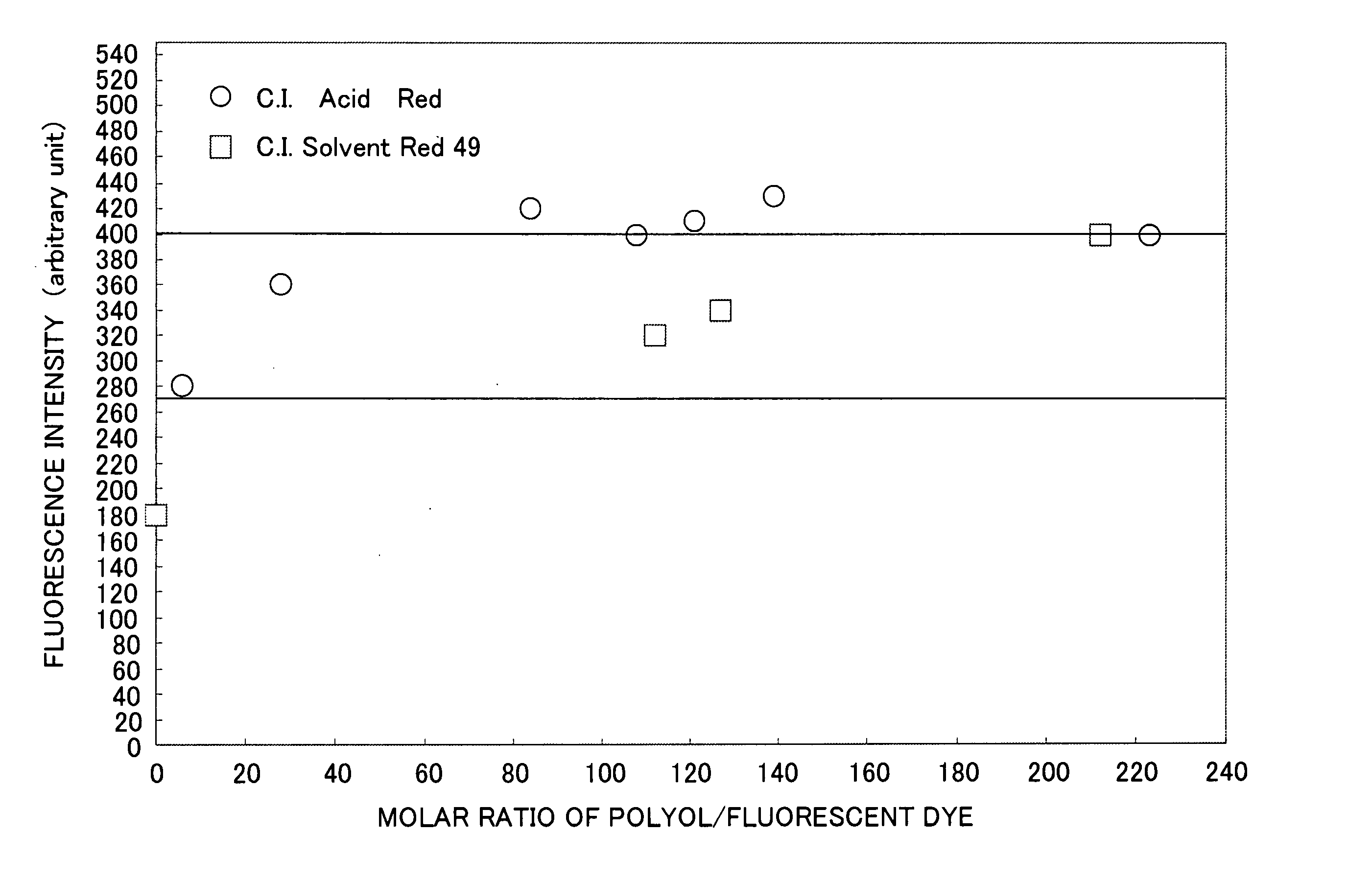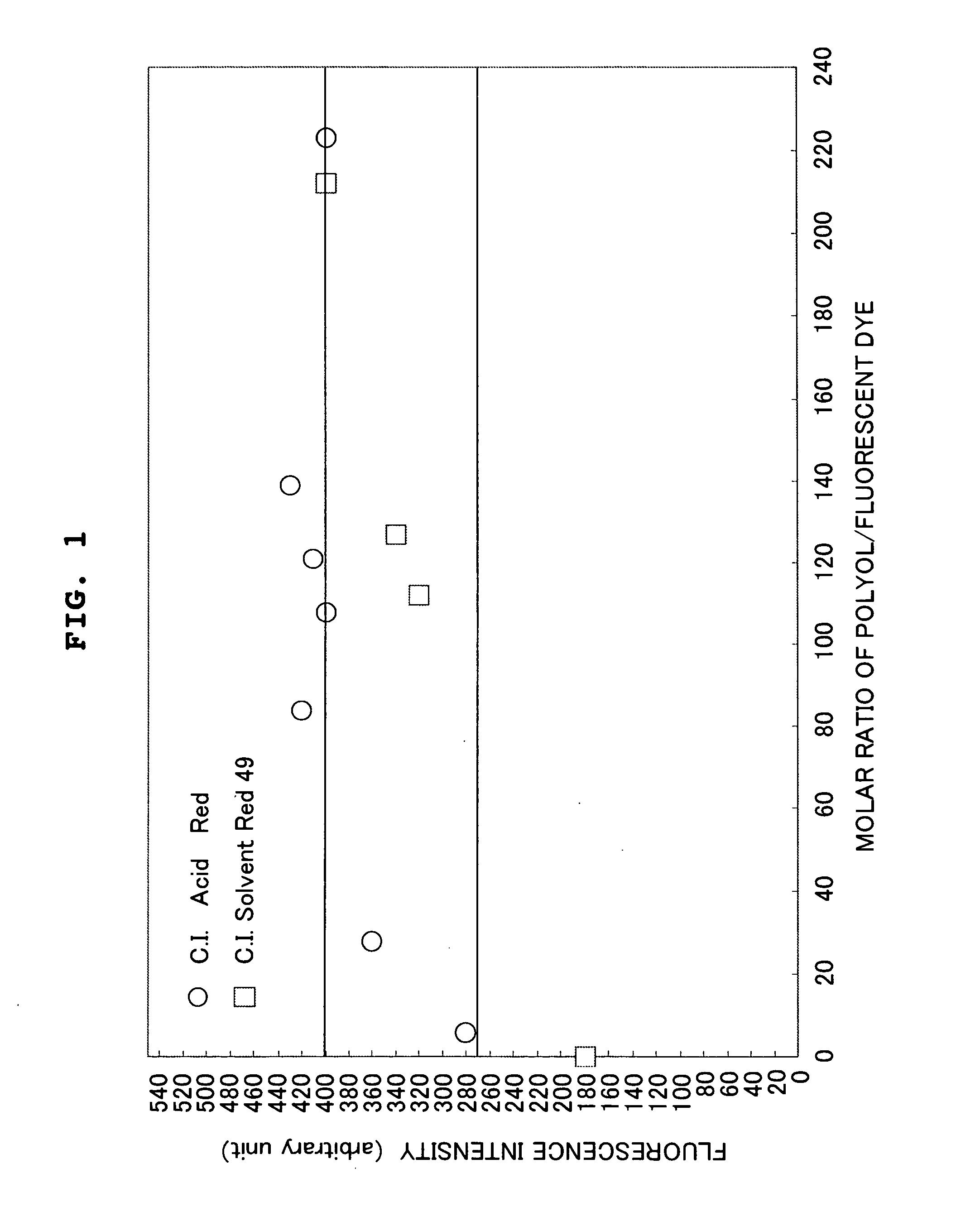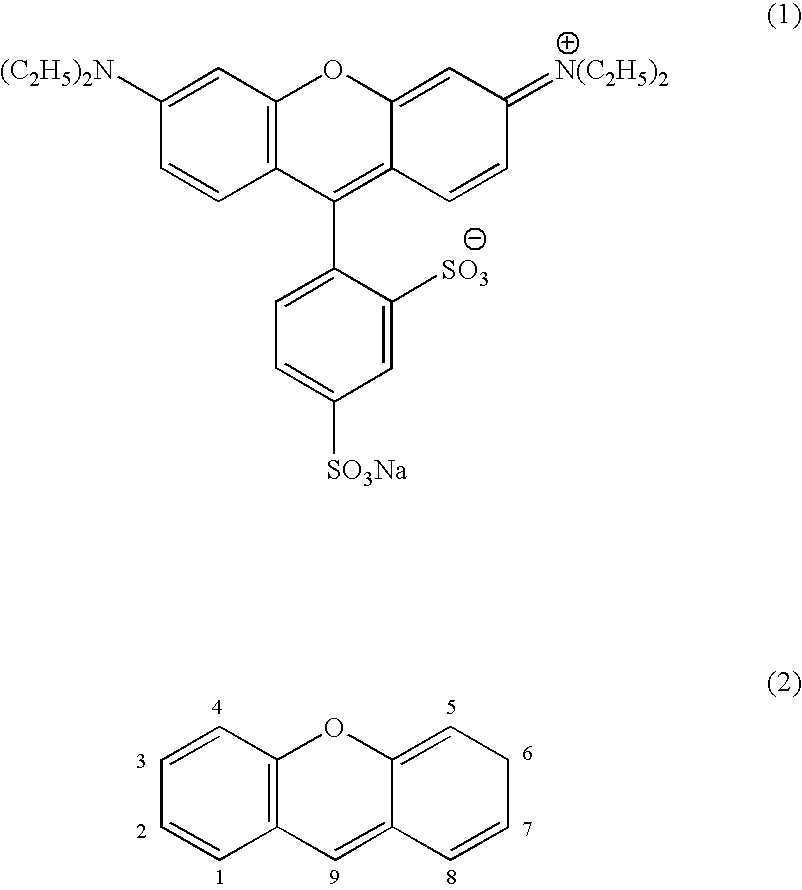Fluorescent water base ink for ink-jet recording
- Summary
- Abstract
- Description
- Claims
- Application Information
AI Technical Summary
Benefits of technology
Problems solved by technology
Method used
Image
Examples
examples 1 to 7
[0027] Ink materials having compositions containing polyol as shown in Table 1 were agitated while using fluorescent dyes of C.I. Acid Red 52, C.I. Solvent Red 49, and C.I. Solvent Yellow 94, followed by being filtrated through a membrane filter of 0.2 μm to prepare inks. Among the ink components, glycerol was used as a moistening agent, and triethylene glycol monobutyl ether and dipropylene glycol propyl ether were used as permeating agents respectively. In Table 1, the concentrations of the respective components are indicated by % by weight. L represents the length of the skeleton for emitting fluorescence of the fluorescent dye, and O / O represents the distance between oxygen and oxygen of two hydroxyl groups of polyol. In the case of 1,2,6-hexanetriol, the distance between oxygen and oxygen of 1-position and 6-position hydroxyl groups is shown. In any one of Examples, the distance between oxygen and oxygen of the hydroxyl groups of polyol was substantially equal to or longer than...
examples 8 to 11
[0031] In relation to the ink prepared in Example 1, the ink composition, especially the amount of use of 1,5-pentanediol with respect to C.I. Acid Red 52 was changed to have various values as shown in Table 3 to prepare inks. The fluorescence intensity was measured and evaluated for the respective prepared inks in the same manner as in Example 1. Obtained results are shown in Table 3.
TABLE 3ExampleComponentExample 8Example 9Example 1011C. I. Acid Red 5211111,5-Pentanediol155140Glycerol15151515Triethylene glycol5555monobutyl etherDistilled water64747839Total100100100100Fluorescence intensity420360280400Evaluation++++++Polyol / fluorescent dye84286223(molar ratio)
[0032] Examples 1 to 3 and Examples 8 to 11 are common to one another in that C.I. Acid Red 52 is used as the fluorescent dye. The relationship between the fluorescence intensity and the molar ratio of polyol (having the distance between oxygen and oxygen substantially equal to or longer than that of the xanthene skeleton) t...
PUM
| Property | Measurement | Unit |
|---|---|---|
| Percent by mass | aaaaa | aaaaa |
| Length | aaaaa | aaaaa |
| Molar ratio | aaaaa | aaaaa |
Abstract
Description
Claims
Application Information
 Login to View More
Login to View More - R&D
- Intellectual Property
- Life Sciences
- Materials
- Tech Scout
- Unparalleled Data Quality
- Higher Quality Content
- 60% Fewer Hallucinations
Browse by: Latest US Patents, China's latest patents, Technical Efficacy Thesaurus, Application Domain, Technology Topic, Popular Technical Reports.
© 2025 PatSnap. All rights reserved.Legal|Privacy policy|Modern Slavery Act Transparency Statement|Sitemap|About US| Contact US: help@patsnap.com



